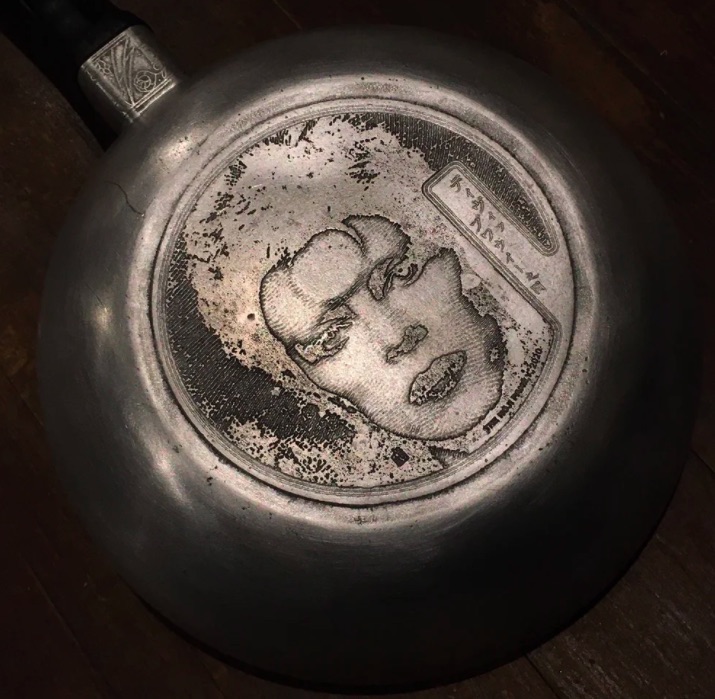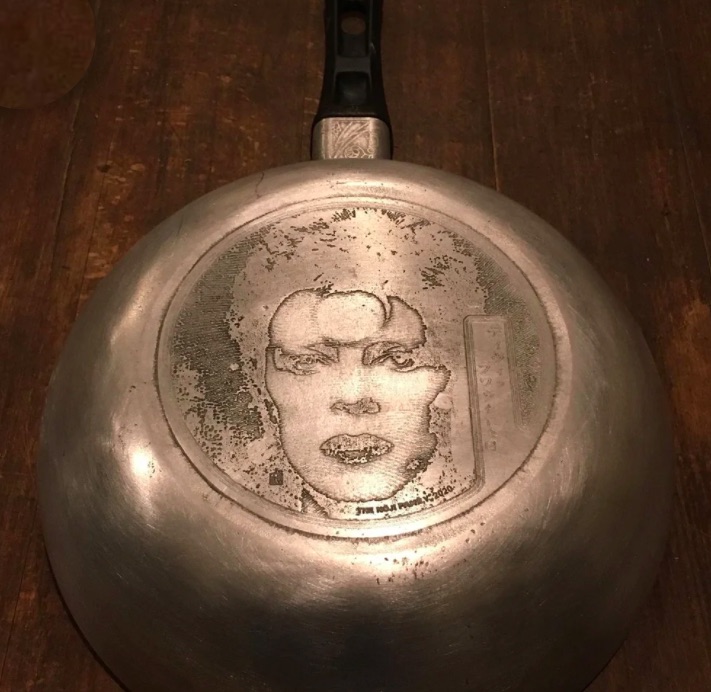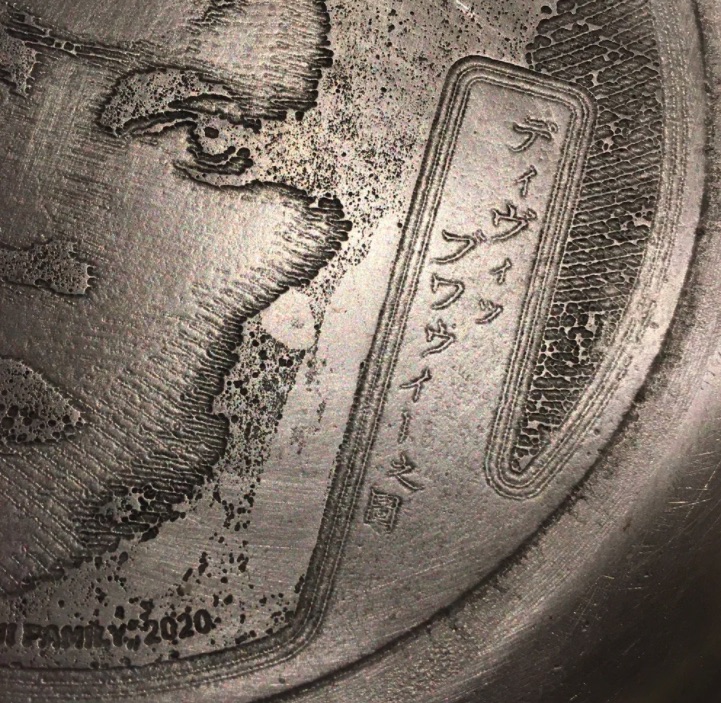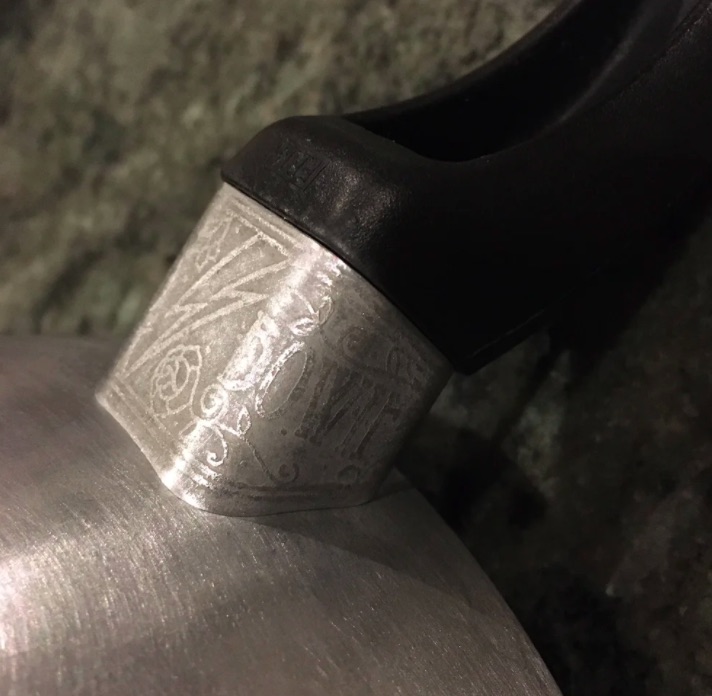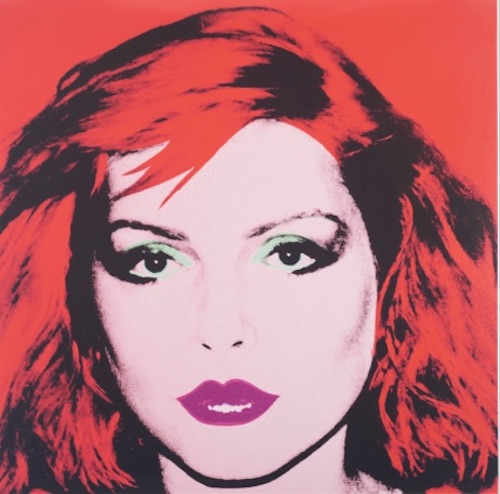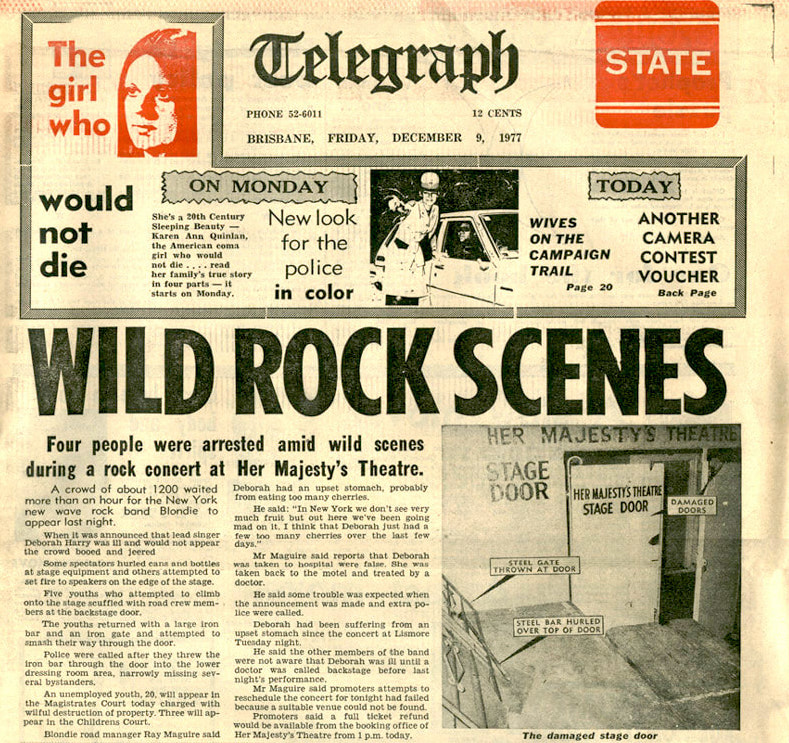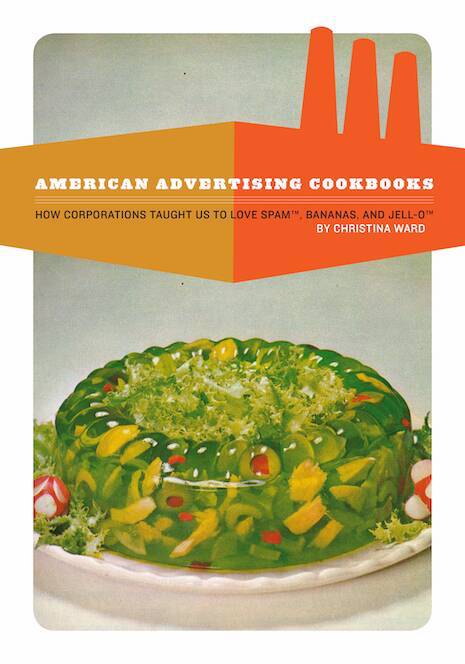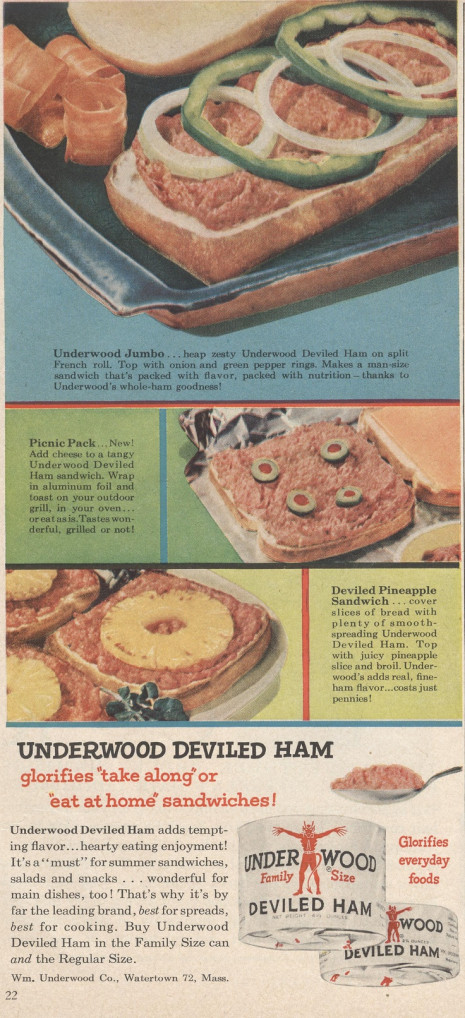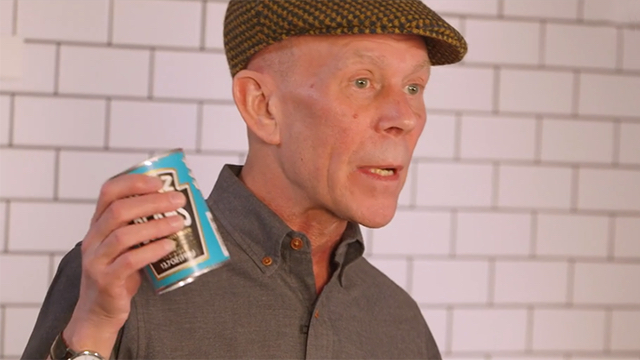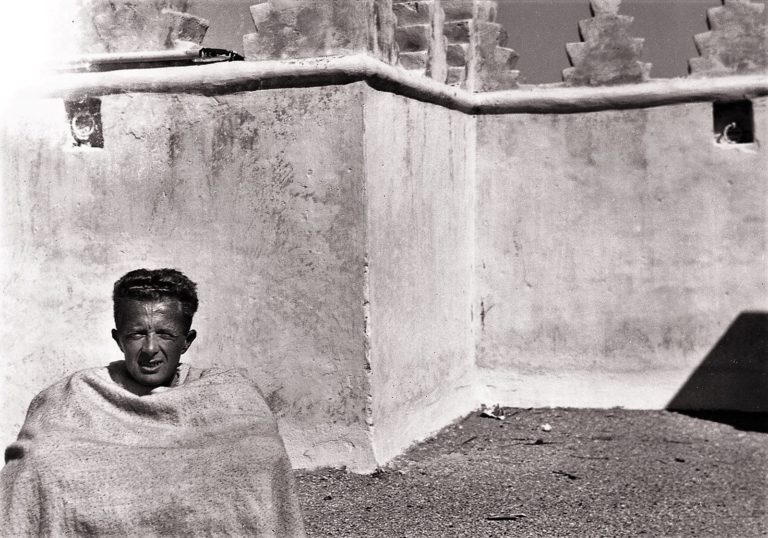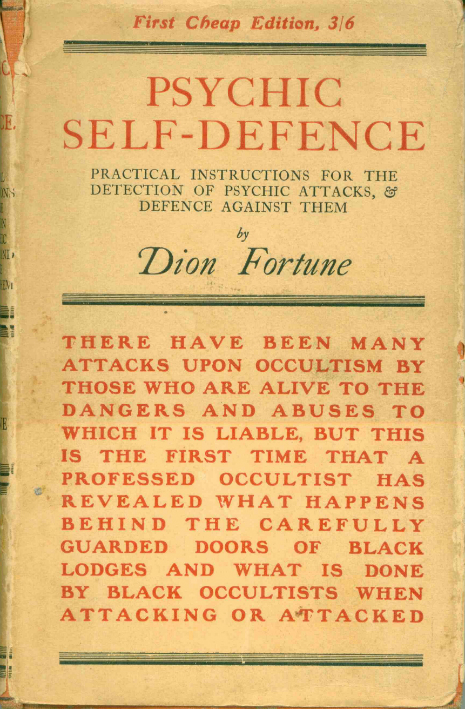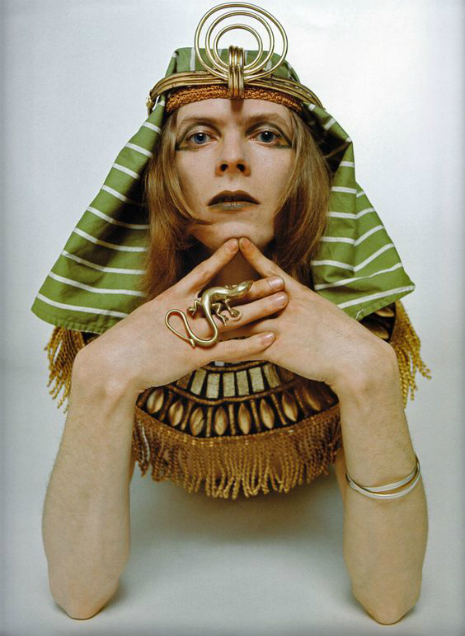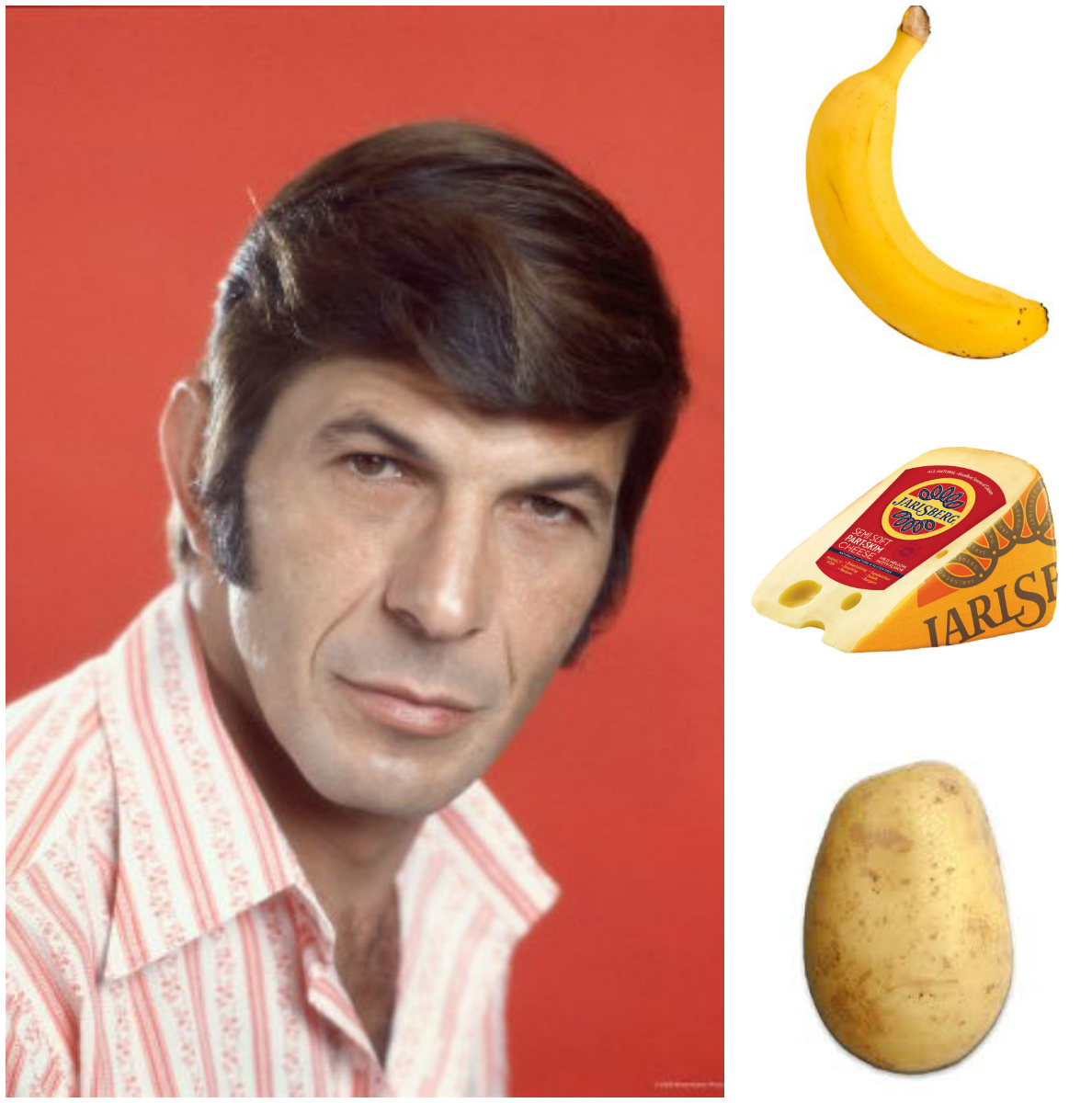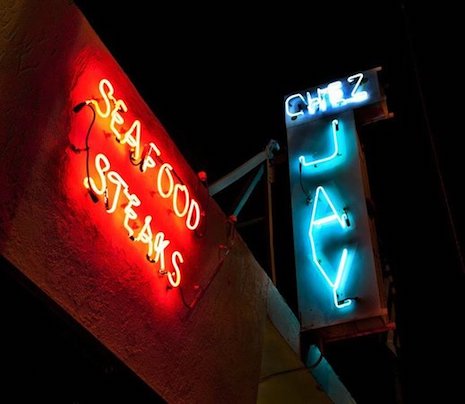
The poster in vinyl copies of ‘The Beggar’, out today on Young God Records (illustration by Nicole Boitos)
Does time slow to a crawl during a Swans performance, or does it approach the speed of light? At the two-hour mark, have your feet really floated off the ground? If it’s a commonplace to compare a Swans show to a ritual, that’s because the shows really are like rituals in at least three respects: as reliable techniques for ecstasy, as exchanges between officiants and audience, as sacrificial acts. Like Sufi trance music, say, or Penderecki, the sound scrambles your sense of clock time, building and prolonging an almost unbearable tension, the expectation that a secret is about to be disclosed, that another dimension in time is close at hand, that the band’s labor will eventually divert the timestream’s flow from the horizontal to the vertical axis. Swans are one of the best live bands going.
The Beggar is Swans’ sixteenth studio album and the sixth since Michael Gira reformed the band in 2010. It continues the remarkable streak Swans have been on since that year’s My Father Will Guide Me Up A Rope To The Sky, a series of records that not only keep faith with the band’s early work, but enrich it. I asked Gira a few questions about the new double LP by email.
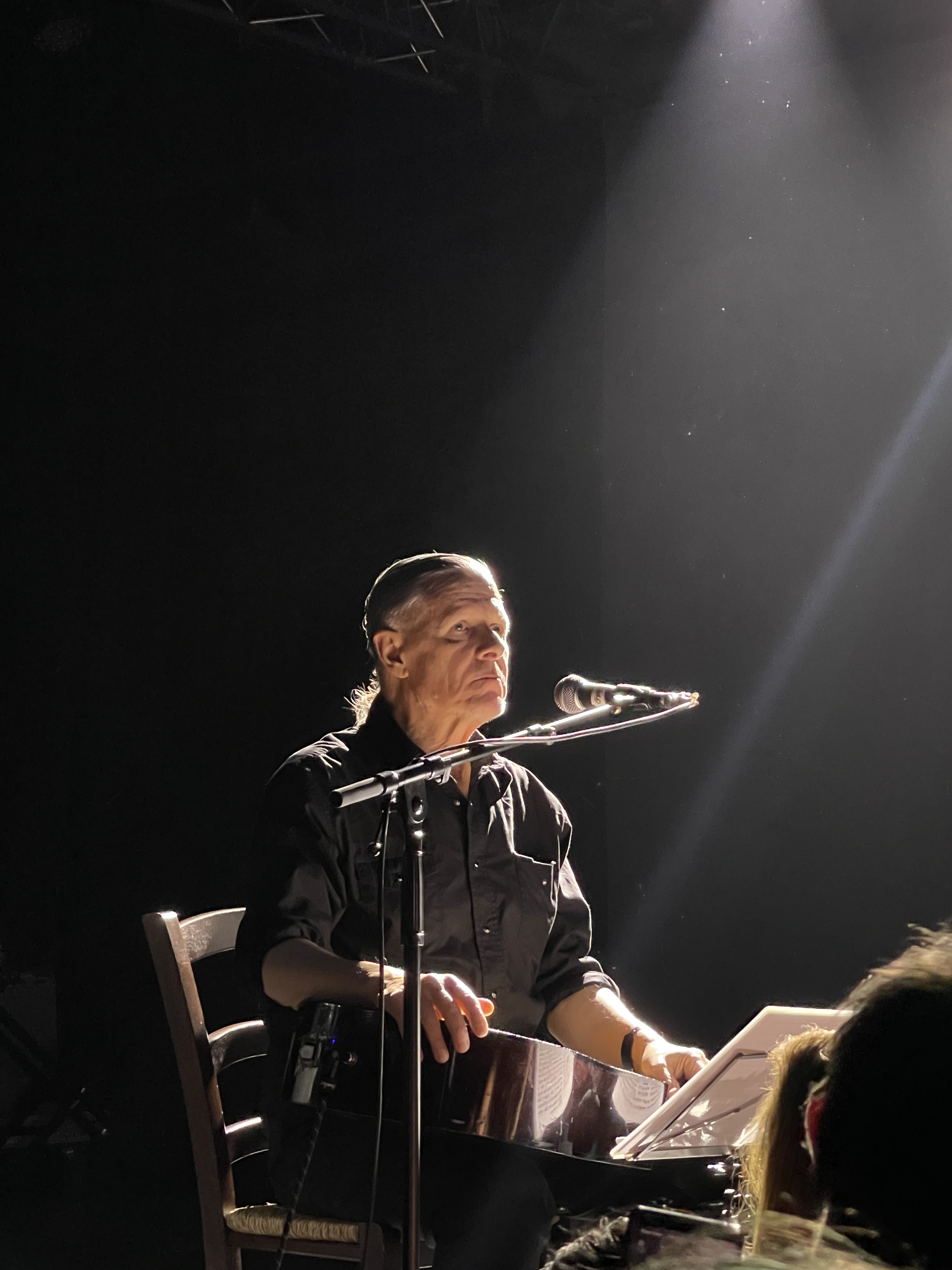
Michael Gira in Berlin (photo by Nicole Oike)
I feel obligated to say how much The Beggar seems to be about death. Am I exaggerating?
Well, at my age it would be silly to avoid the subject, but the use of the word in some of the songs has a different implication in each instance, I would hope, none of which I’d consider to be morose. It’s just a fact of life, like having a bowel movement. The fact that it’s coming sooner rather than later at this point does lend an increased urgency, though I remain just as stunned by the raw and inexplicable fact of my existence as ever. I sometimes stare blankly at the blurring scene in front of me for minutes at a time, hoping to catch a glimpse of the fabric of the air tearing and revealing what’s hidden behind it. It feels like it’s screaming for release. I hope I’m able to witness what it is before I terminate.
In Phil Puleo’s zoological illustration of the band on the tour poster, you appear as a pink poodle. Maybe it’s a question for Phil, but can you shed any light on the correspondences between band members and animals?
This particular group “promo shot” was conceived out of desperation to avoid at all costs another deeply regrettable photo of a rock band. I had noted with amusement Phil’s highly skilled efforts at memorializing people’s pets in finely crafted watercolors he sometimes executes on commission. So I thought, why not superimpose our heads on animals and have Phil illustrate it? I sent an email to everyone asking them to choose their own animal and provide Phil with a headshot. I have no idea why the others chose the animals they chose, but in my case a pink poodle is obviously apt! In the case of Phil choosing an ape for himself, that has to do with an incident from decades ago. There was a section in a long and ponderous instrumental where suddenly Phil would pound the hell out of a mounted kick drum with hard mallets, solo, with no particular rhythm, but played with incredible physical force and it would thunder against the walls of whatever venue we were performing in. Very dramatic. He’d leave brief silences between the volleys for added impact. It was somewhere in Germany I suppose, that placed perfectly in one of those silences someone shouted out in a deep voice with a thick German accent “He… plays… like… an… APE!!!” Ever since then I have often referred to Phil lovingly as Mr. Ape.

Recently on social media you wondered whether your last thought will be of Chris Burden’s “Velvet Water.” Is “Los Angeles: City of Death” about anyone in particular? I suppose it could be a self-portrait, but I also think of Chris Burden crawling through broken glass on Main Street, crucified on the Beetle in Venice, airing his “Poem for L.A.” on local TV.
Yikes! To have a haphazard post from an idiotic social media site quoted back to me is like being taken to task for something thoughtlessly scrawled on a public restroom wall while taking care of business. Actually, not dissimilar I suppose! Anyway, Burden was one among many formative art figures from my youth in LA. His work remains powerful, if opaque. To me the early stuff is poetry. Each visceral act is perfectly contained in a few short, dry sentences. Through the Night Softly (crawling bound over broken glass) was broadcast like a commercial on TV and it’s wonderful to think of a random unsuspecting LA TV watcher suddenly encountering such an image late at night. I always conflate it with Van Gogh’s Starry Night for some reason. In fact I refer to it in a line in a song I wrote about a different harrowing event, called “When Will I Return?” But anyway, when I wrote “Los Angeles: City of Death” I’d been suffering from intense bouts of nostalgia for the place while fully aware that the LA of my childhood no longer exists and also that I was actually ecstatic to leave it behind and watch it recede beneath me through the window of the airplane as I headed for my new life in NYC, decades ago. In a way though, LA is the flowering root from which all that’s beautiful and hideous in American culture grows, a place of awesome glamour, sunlight and artifice, concealing depravity, greed and thoughtless cruelty just beneath its surface. It’s the original land of sprawling subdivisions, shopping malls and choked freeways, the home of the giant simulacrum Disneyland, and as it metastasizes out into the desert hills it kills everything beneath it and within its reach. The whole place is an environmental, psychic and cultural cancer zone. Naturally, hovering above it is a malignant sun, trying its best to broil everything it can touch alive. And now of course come the fires, and then the floods, and soon I suppose an earthquake that will dump the whole mess into the sea. But I have tremendous memories of the place! I love it. I’m still drawn to it somehow. An impossible dream, but if I had the money I’d buy a house on the beach in the South Bay area in an instant and live there for the rest of my life.

Bill Rieflin, 1960-2020 (via Bandcamp)
Please talk about Bill Rieflin’s contributions to Swans, particularly in the latter period.
Losing Bill (and just a year before that, his wife Frankie) was like having a vital internal organ removed without anesthesia. The ache is still there and I try not to think about it. Bill was one of the most exceptional human beings I have ever encountered. His intelligence was boundless and his dry wit and unexpected insights were a joy to experience. Working with him once every year to 18 months or so was always a high point of my life, in that not only did I get to make music with him but I got the chance to hang out with him as well. He always brought a fresh and vital perspective to any song he worked on. Typically, he would have never heard the song before and I’d play it for him in the studio, and it would be immediately apparent what instrument he’d play. He performed! He didn’t just play a part. Whatever he played always had the stamp of his personality in it. He played piano, bass guitar, electric or acoustic guitar, organ, synthesizer, percussion, drums, and he sang, too – whatever it was deemed a song needed. Once, rather than play something, he erased the end of someone else’s repeating short guitar measure throughout a song – and it worked beautifully. He taught me the trick of sometimes recording onto a new track of a song without listening to the song itself in playback, so that the performance would have an unexpected effect. Anything to avoid the inevitable doldrums that often creep in after long hours in the studio. Sometimes he’d double an existing full-kit drum performance exactly, just adding slight nuances and accents along the way to ensure vitality. He played a tambourine to a song sitting in a swivel chair with the mic in front of him and he swirled slowly in a circle as he played so that the tambourine would fade in and out throughout the performance. He played very aggressive, climactic chords on a piano to a song that intentionally was lacking a time signature, so that the downbeats were entirely random (the band had played this with eye contact to maintain unity) and he nevertheless landed with his chords exactly on each downbeat flawlessly. He played a ride cymbal with a tiny nail so that there was no tone, only the slightest bit of glassy percussion and the sheen of sustain. He was never dull, never predictable, and always brought the right amount of pathos or humor to a song, whatever was called for that I myself would have never imagined. He was a titan of a human being and an unparalleled musician and a master of aesthetics. I am less of a person without him on this earth.
How did it come about that Norman Westberg opens the show?
Swans reformed in 2010 and the line up of musicians from then until 2018 was myself, Norman Westberg, Phil Puleo, Kristof Hahn, Christopher Pravdica, and Thor Harris (later replaced by Paul Wallfisch). At the end of that 8 year period we’d spent so much time together and hashed through so much music that it seemed there was nowhere to go with that configuration musically. I decided to continue Swans with a revolving lineup of musicians. As it turns out, everyone except Norman and Thor has slowly seeped back into the picture after the passage of a few years. I love Norman as a person and a musician. I suspect in the near future he’ll be back in the fold, but in the meantime he is great as a solo artist so I thought this would be a way for him to properly shine. We get to tour together again after all.

The cover of ‘The Beggar’ (illustration by Nicole Boitos)
Continues after the jump…






